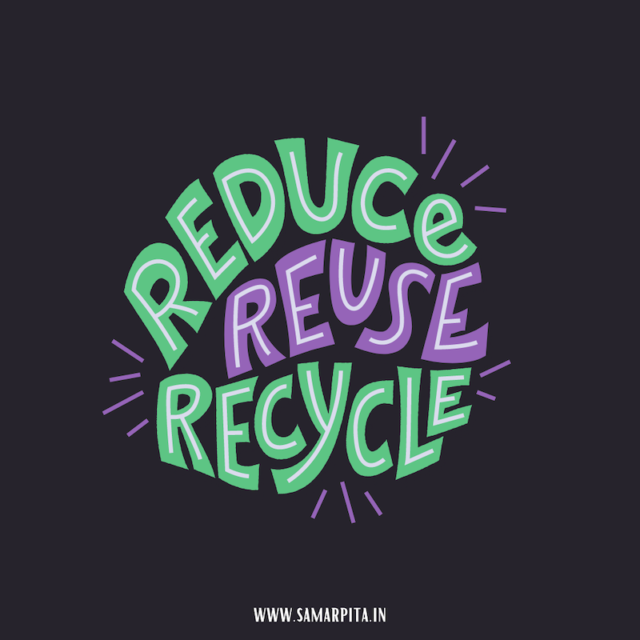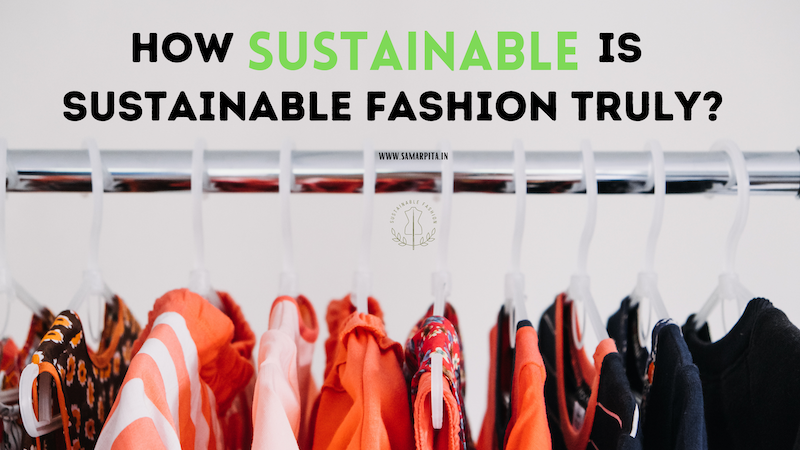Sustainable fashion is quite a thing lately specially amongst influencers and the affluent. The real idea behind the concept of sustainable fashion is not just that the materials used are sustainable, but also that the process of making these clothes involves better treatment of the people making these clothes, also that they are cruelty-free towards animals. This is the book definition, but there is a lot of rightful speculation on how sustainable is sustainable fashion actually.
What we pass off as ‘retail therapy’ and go on buying sprees, might do a little to do our minds good but the impact it has on the environment and the society is quite different. one might argue that the more clothes and make up one buy, more people get to earn. True. But in what conditions do they earn? Underpaid workers forced to work in poor conditions don’t really add to sustainability of the planet on a whole, do they?
Also Read: What Exactly Is Sustainable Living?
With never-ending line of websites selling garments, accessories, jewellery, etc at heavily discounted price and a variety far larger than what retail in-store brands have been selling all these years, everybody is buying more than they would have without the ease of Internet. Cheap also means things that are mass-created with inferior materials which will remain on the earth long after we are gone.
How Long Does Each Piece Of Fashion Last On The Planet?
I was recently reading this article about how long doe it take for every fabric to decompose on a website called hercircle, and what I read left me astounded even though I was already aware of some of the facts.

According to the article linked above, cotton takes a week to 5 month to decompose. Silk takes 1 – 4 years, polyester 20 – 200 years, lined 1 – 2 weeks, leather 25 – 50 years, nylon 30 – 40 years, and denim 10 – 20 months. The counter-argument to this date is sometimes said that denim and cotton require more water in their lifetimes. And that too is a serious concern.
So how do likes of you and me who wish to live a sustainable life but are not deep into the research do? A few things to remember:
- Living the sustainable life is a luxury in some ways is a luxury not many can afford, and that is OKAY.
- To be able to live a somewhat sustainable life is a privilege and not a matter of conceit.
- Keeping lights, fans, and AC on in empty rooms, and then wearing sustainable fashion doesn’t make us environment conscious.
What Is Fast Fashion?
Where you upset when a certain clothes brand app got banned in India? I know alternatives are available now, but for a while it did stop people from endless, mindless shopping of clothes mostly made of non-environment friendly materials. The earth began to heal, this was one of the many ways when the country remained in lockdown.
When we say fast fashion, what it means are clothes and accessories that move quickly from the designers sketch pad to the retail outlet to stay abreast with the ever-changing trend. As a result, easily available materials are used and the condition in which the products are manufactured aren’t most friendly.

Mass-production mean lower rates to customers, but also more availability to the same people which the people making the products remain underpaid and undervalued. Aside from cheap fabric which will remain on this planet long after the wearer is gone, fast fashion is also one of the world’s largest pollutants. The toxic chemicals of these fabrics pollute the earth and threaten ocean life.
While brands like Uniqlo, Shein, Forever 21 etc are widely considered to be fast fashion, Zara mostly doesn’t add to the list because the products are not low-priced. While reading about this, I was introduced to the term called Greenwashing.
And, Greenwashing?
Greenwashing is the process of conveying a false impression or providing misleading information about how a company’s products are more environmentally sound. Greenwashing is considered an unsubstantiated claim to deceive consumers into believing that a company’s products are environmentally friendly.
According this article I found on the Internet, brands like Zara, Primark, H&M, and ASOS are accused of greenwashing.
Is Sustainable Fashion 100 % Sustainable?
All this talk brings me back to my original question – Is Sustainable Fashion Truly Sustainable? How much of it is our responsibility? This second question arises because of greenwashing, where brands have led us to believe that their products are sustainable.
People will obviously believe what they are told, people have to sustain themselves before they opt for sustainable living. So a person trying to make a living cannot spend time looking out for answers and truth. This article isn’t being written to tell you a universal truth about sustainable fashion either.
It is however, wise to know about things – to be aware. Understand that only cotton is not sustainable. Hemp is, but have you seen the cost of garments made from hemp? I will repeat myself here, sustainability is a privilege to everybody can afford.
With this article, I invite readers to reflect on this fashion lifestyle and share their view & learnings. May we all learn from each other and embrace the sustainable fashion that also helps us sustain ourselves. Meanwhile,
- Recycle
- Reuse
- Buy less
- Wear more
- Upcycle
(This blog post is part of Blog Chatter’s Cause A Chatter)



2 Replies to “How Sustainable Is Sustainable Fashion Truly?”